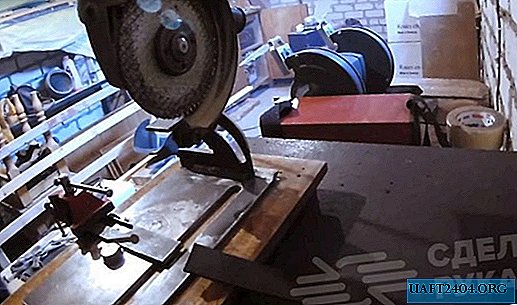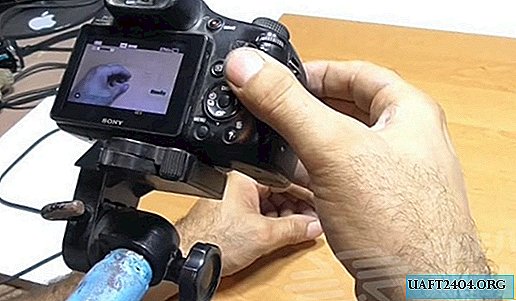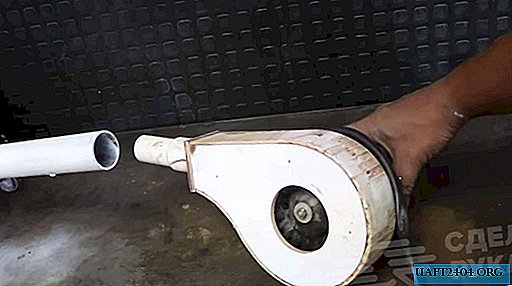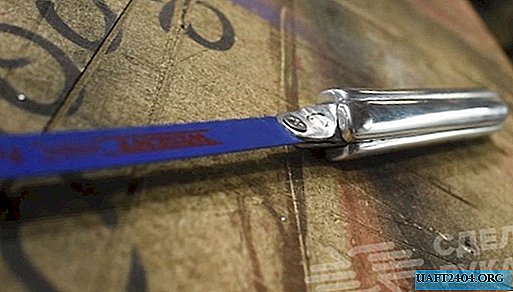Share
Pin
Tweet
Send
Share
Send
The material will also be useful to those who wish to understand in more detail the purpose and calculation of the simplest radio components. In particular, you will learn in detail about such components of the power supply as:
- power transformer;
- diode bridge;
- smoothing capacitor;
- zener diode;
- resistor for zener diode;
- transistor;
- load resistor;
- LED and resistor for it.
Also in the article it is described in detail how to choose radio components for your power supply and what to do if there is no required rating. The development of the printed circuit board will be clearly shown and the nuances of this operation will be revealed. A few words are said specifically about checking radio components before soldering, as well as about assembling the device and testing it.
Typical stabilized power supply circuit
There are a lot of various schemes of power supplies with voltage stabilization today. But one of the simplest configurations, which a beginner should start with, is built on only two key components - a zener diode and a powerful transistor. Naturally, there are other details in the circuit, but they are auxiliary.
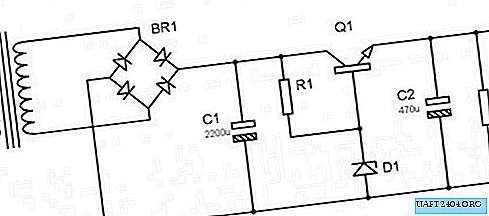
It is customary to disassemble circuits in electronics in the direction in which current flows through them. In a power supply with voltage stabilization, it all starts with a transformer (TR1). It performs several functions at once. Firstly, the transformer lowers the mains voltage. Secondly, it ensures the operation of the circuit. Thirdly, it powers the device that is connected to the unit.
Diode bridge (BR1) - is designed to rectify reduced mains voltage. In other words, an alternating voltage enters it, and the output is already constant. Neither the power supply itself nor the devices that will connect to it will work without a diode bridge.
A smoothing electrolytic capacitor (C1) is needed in order to remove the ripples present in the household network. In practice, they create interference that adversely affects the operation of electrical appliances. If for example we take a sound amplifier powered from a power supply without a smoothing capacitor, then these very ripples will be clearly audible in the columns in the form of extraneous noise. Other devices may cause interference, malfunction, and other problems.
Zener diode (D1) is a component of the power supply that stabilizes the voltage level. The fact is that the transformer will produce the desired 12 V (for example) only when the power outlet is exactly 230 V. However, in practice such conditions do not exist. The voltage can both sag and increase. The same transformer will give at the output. Due to its properties, the zener diode equalizes the low voltage regardless of surges in the network. For this component to work correctly, a current limiting resistor (R1) is needed. About it in more detail below.
Transistor (Q1) - needed to amplify the current. The fact is that the zener diode is not able to pass through itself all the current consumed by the device. Moreover, it will work correctly only in a certain range, for example, from 5 to 20 mA. To power any devices, this is frankly not enough. A powerful transistor copes with this problem, the opening and closing of which is controlled by a zener diode.
Smoothing Capacitor (C2) - designed for the same as the above C1. Typical stabilized power supply circuits also include a load resistor (R2). It is needed so that the circuit remains operational when nothing is connected to the output terminals.
Other components may be present in such schemes. This is a fuse that is placed in front of the transformer, and an LED signaling the unit is turned on, and additional smoothing capacitors, and another amplifying transistor, and a switch. All of them complicate the circuit, however, increase the functionality of the device.
Calculation and selection of radio components for the simplest power supply
The transformer is selected according to two main criteria - voltage of the secondary winding and power. There are other parameters, but within the material they are not particularly important. If you need a power supply, say, at 12 V, then the transformer must be selected so that it can be removed a little more from its secondary winding. With power all the same - we take with a small margin.
The main parameter of the diode bridge is the maximum current that it can pass. It is worth focusing on this characteristic in the first place. Let's look at some examples. The unit will be used to power a device that consumes a current of 1 A. This means that the diode bridge needs to be taken at about 1.5 A. Suppose you plan to power a 12-volt device with a power of 30 watts. This means that the current consumption will be about 2.5 A. Accordingly, the diode bridge must be at least 3 A. Its other characteristics (maximum voltage, etc.) can be neglected in such a simple circuit.

Additionally, it is worth saying that the diode bridge can not be taken ready, but assemble it from four diodes. In this case, each of them must be rated for the current passing through the circuit.
To calculate the capacity of the smoothing capacitor, rather complex formulas are used, which in this case are useless. Typically, a capacitance of 1000-2200 μF is taken, and this will be enough for a simple power supply. You can take a capacitor and more, but this will significantly increase the cost of the product. Another important parameter is maximum voltage. According to it, the capacitor is selected depending on what voltage will be present in the circuit.
It should be borne in mind that in the interval between the diode bridge and the zener diode after switching on the smoothing capacitor, the voltage will be approximately 30% higher than at the terminals of the transformer. That is, if you make a 12 V power supply, and the transformer gives out with a margin of 15 V, then in this section, because of the smoothing capacitor, it will be approximately 19.5 V. Accordingly, it should be designed for this voltage (the closest standard rating 25 V).
The second smoothing capacitor in the circuit (C2) is usually taken with a small capacitance - from 100 to 470 microfarads. The voltage in this section of the circuit will be already stabilized, for example, to the level of 12 V. Accordingly, the capacitor should be designed for this (the closest standard rating is 16 V).
And what if the capacitors of the required ratings are not available, and you are reluctant to go to the store (or there is simply no desire to buy them)? In this case, it is quite possible to use the parallel connection of several capacitors of lower capacity. It should be noted that the maximum operating voltage with such a connection will not be summed!
The zener diode is selected depending on what voltage we need to get at the output of the power supply. If there is no suitable rating, then several pieces can be connected in series. The stabilized voltage, in this case, will be added up. For example, take the situation when we need to get 12 V, and there are only two zener diodes at 6 V. are available. By connecting them in series, we get the desired voltage. It is worth noting that to obtain an average nominal value, parallel connection of two zener diodes will not work.
It is possible to select the current-limiting resistor for the zener diode as accurately as possible only experimentally. To do this, a resistor of approximately 1 kOhm is included in the already working circuit (for example, on a breadboard), and an ammeter and a variable resistor are placed between the circuit and the zener diode. After switching on the circuit, it is necessary to rotate the handle of the variable resistor until the required rated stabilization current flows through the circuit section (indicated in the characteristics of the zener diode).
The amplifying transistor is selected according to two main criteria. Firstly, for the circuit under consideration, it must necessarily be an n-p-n structure. Secondly, in the characteristics of the existing transistor, you need to look at the maximum collector current. It should be slightly larger than the maximum current for which the assembled power supply will be designed.
The load resistor in typical schemes is taken with a nominal value of 1 kOhm to 10 kOhm. Less resistance should not be taken, because in the case when the power supply is not loaded, too much current will flow through this resistor and it will burn.
Design and manufacture of printed circuit boards
Now, briefly consider a good example of the development and assembly of a do-it-yourself stabilized power supply. First of all, it is necessary to find all the components present in the circuit. If there are no capacitors, resistors, or zener diodes of the required ratings, we exit the situation in the ways described above.

Next, you will need to design and manufacture a printed circuit board for our device. For beginners, it is best to use simple and, most importantly, free software, for example, Sprint Layout.
We place on the virtual board all the components according to the selected scheme. We optimize their location, adjust depending on what specific details are available. At this stage, it is recommended to double-check the actual dimensions of the components and compare them with those added to the developed scheme. Pay special attention to the polarity of electrolytic capacitors, the location of the terminals of the transistor, zener diode and diode bridge.
If you go to add a signal LED to the power supply, then it can be included in the circuit both before the zener diode and after (preferably). In order to select a current-limiting resistor for it, it is necessary to perform the following calculation. Subtract the voltage drop on the LED from the voltage of the circuit section and divide the result by the rated current of its power supply. Example. In the area to which we plan to connect the signal LED, there are stabilized 12 V. The voltage drop for standard LEDs is about 3 V, and the nominal supply current is 20 mA (0.02 A). We get that the resistance of the current-limiting resistor is R = 450 Ohms.
Component Inspection and Power Supply Assembly
After developing the board in the program, transfer it to fiberglass, etch, tack the tracks and remove excess flux.






After that, we install the radio components. It is worth saying here that it will not be superfluous to immediately double-check their performance, especially if they are not new. How and what to check?
Transformer windings are checked with an ohmmeter. Where there is more resistance, there is the primary winding. Next, you need to connect it to the network and make sure that it provides the required reduced voltage. When measuring it, be extremely careful. Also note that the output voltage is variable, therefore the corresponding mode is activated on the voltmeter.
Resistors are checked with an ohmmeter. The zener diode should "ring" only in one direction. We check the diode bridge according to the scheme. The diodes built into it must conduct current in only one direction. To check the capacitors you will need a special device for measuring electric capacitance. In the transistor of an n-p-n structure, current must flow from the base to the emitter and to the collector. In other directions, it should not flow.
It is best to start assembling with small parts - resistors, a zener diode, an LED. Then the capacitors are soldered, the diode bridge.
Pay special attention to the installation process of a powerful transistor. If you mix up his conclusions, the scheme will not work. In addition, this component will be heated quite strongly under load, because it must be installed on a radiator.
The last to be installed is the largest part - the transformer. Further, to the conclusions of its primary winding, a network plug with a wire is soldered. At the output of the power supply, wires are also provided.

It remains only to thoroughly double-check the correct installation of all components, wash off the flux residues and turn on the power supply. If everything is done correctly, then the LED will glow, and at the output the multimeter will show the desired voltage.
Share
Pin
Tweet
Send
Share
Send



